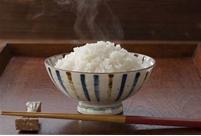Longevity gene
No need for a doctor throght eat in moderation
Forget the old throgh eat in under 60% fullness
Approaching God through eat in under 40% fullness
 |
 |
Nanboku Mizuno
As they have been observed two groupes of monkeys for decades which one group has reduced caloric intake by 25% and other group has eaten up to feeling one’s fill. It has shown that monkeys with reduced calories did not age and were young. Now, in the age of satiety, the existence of longevity genes is attracting attention. Recently, as Japan ranks among the world’s longest living nations, there are talks about the differences in food culture and lifestyle between Japan and other countries overseas.
Originally, Japanese had two meals a day. The three meals a day came from the Azuchi-Momoyama period to the early Edo period.
It was no thought that we take three times meals in a day is written in Oan-story by Hikone’s Samurai’s daughter
It is clear that the samurai had been eating twice a day until the early Edo period.
On this “Oan-story”, it is described that the morning and evening meals were porridge, and the rice was eaten only when they go hunting to the mountains, which indicates that the meal was mainly rice.
At the beginning of the Meiji era, which resumed international exchange, Americans have wondered. Why did the hikyaku (an express messenger), whose main diet was meat-free rice, run that long distance? There seemed to be a good use of Waraji ( straw shoes), but the Japanese people who mainly eat rice had physical strength.
who worked in Osaka during the Edo period, Manboku-Mizuno (1757-1834) reported that the content of the meal changed people’s life, their face and personality.
He was a bad boy since childhood that drank alcohol, was stealing, fighting and gambling at ten age. At the age of 18, he do evil thing and went to jail, noticed that the criminal’s face of the jail was bad, and was also told that he had a disaster’s face looks. Also, he received advice that his life time is one year’s life and tried to become a priest, but he was refused because of his face was too bad.
He had decided to make a decision that spending one year living a refined and pure life by eating only barley and soybeans.
After that, he studied Sansuke at a bathhouse for three years to train a physiognomy, and studied the phase and skeleton of the dead at a crematorium for three years. He studied very hard for research, he became under the protection of the Imperial Household and he has more than 600 disciples in late life.
The meal was one cup and half barley, one cup of soup, and the one cup of sake was his main food. He came to the conclusion that the content of a meal determined luck and coined the word “luck is by food.”
What do they Edo people say who practice such an ideas, when they saw the current meal? Be careful not to overeat.
